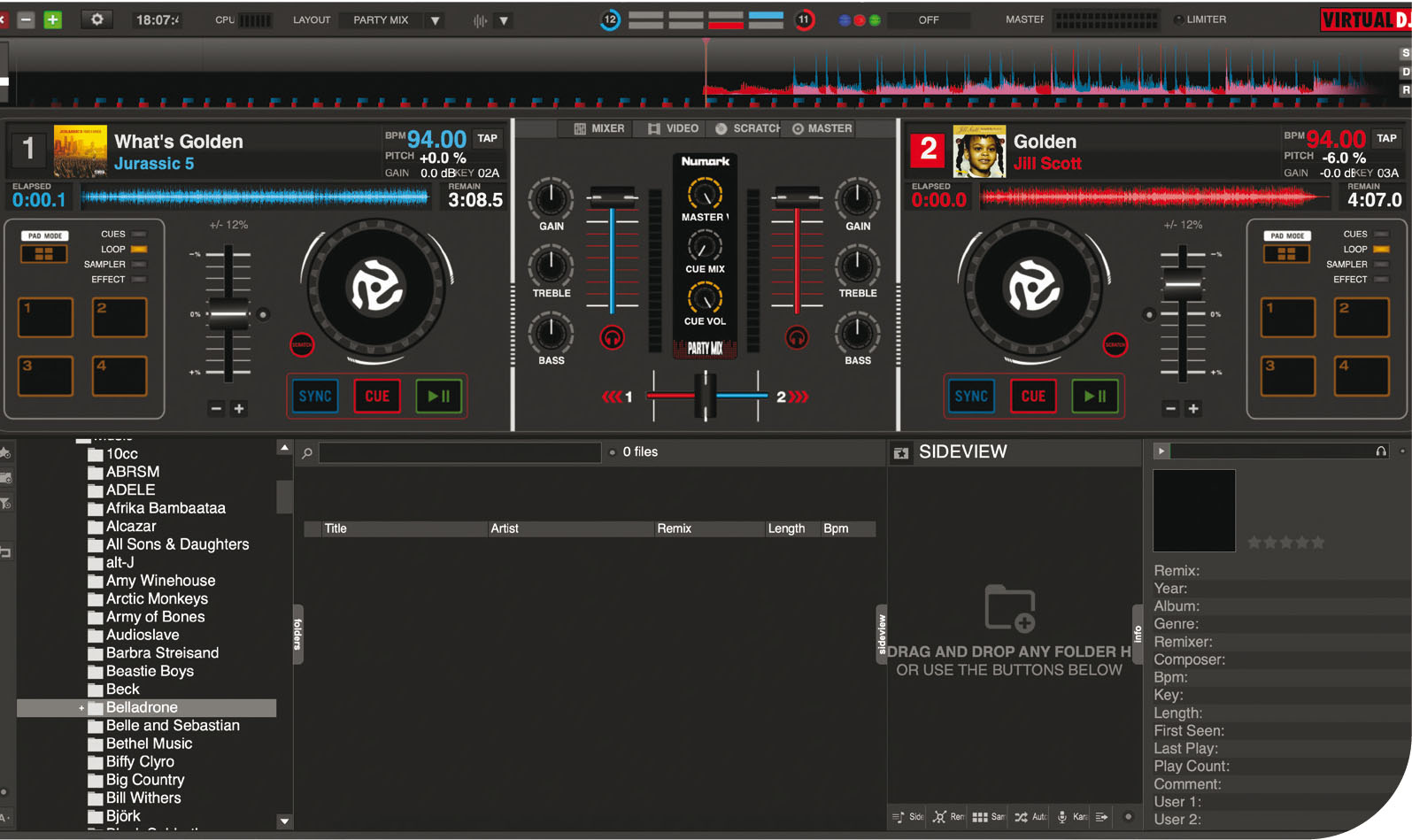
When I was at school, students and teachers appeared to have quite a ‘fixed’ view on what music was. At the time, I was a flautist and a lousy pianist, and it was expected that in my music lessons I'd play my flute or possibly the piano. At no point did anyone suggest that DJing was a viable option as a musical performance. However, things have changed, and DJing is now recognised as a very highly skilled medium and a performance choice for many qualifications.
DJing as an artform began in the 1970s in New York and was largely associated with the emerging hiphop scene. Since then, it has crossed over into a range of other styles of music.
I acquired the Numark Party Mix to see if it would be appropriate to use within some lessons I had developed on the history of hiphop. I wanted students to have a go at blending the instrumental section of an existing piece of music – the blending of these ‘breaks’ became what we now know as breakbeat.
Getting Started
On opening the box, you are greeted with a plastic controller with two turntables, individual volume faders and a cross fader for blending between the two channels. The controller also features hardware controllers for a number of other functions including basic EQ and sampling. I connected the controller and it was immediately recognised by my computer as a piece of audio hardware and it was very easy to route sound through it.
The Party Mix is only a controller however, and requires some software to run. Fortunately, Numark has included a license for a piece of software called Virtual DJ. This is a third-party application and can be bought separately and, if you'd like to try it out, there is a free version for home use. I've got to be honest – getting the software license sorted with the Party Mix was not straightforward. It took me some time to get everything working correctly and the app to recognise my legitimate license.
Once everything was sorted, the app includes a ‘skin’ to make the software match the hardware, so the on-screen buttons mirror the hardware controls. This was very useful for a DJing novice like me.
Basic Operation

The first thing I needed was some music to play – so I picked a couple of songs that I knew were of a similar tempo and loaded them into the software. I used the drag-and-drop method; Virtual DJ has an option to search for files on your device, but sadly this isn't very intuitive. Once I had some music loaded on both virtual turntables I moved to the hardware.
The obvious place to start seemed to be ‘Play’ which, as expected, began the track on the selected side. Then, when I hit play on the other side, I could blend between the two tracks. At this point I deliberately hadn't tried to get anything in sync – I just wanted to explore the hardware controls and ensure that everything was working. It was – good. The faders adjusted the relative volume and the EQ controls adjust the relevant frequencies. The turntables changed the playback of the track by either slowing it down, speeding it up, or stopping as I moved my hands.
Creating a mix
One of the hardest skills that I've found to master is getting two records to be perfectly in sync. Theoretically, by altering the relative playback speed of each turntable it should be possible to match the tempo of the two records and then using the platters to ensure that the beats are lined up between the two tracks. However – I've never successfully done this by ear (I know… I just haven't practised enough). Fortunately, the Party Mix has a very helpful button on each channel labelled Sync. If you press this, the software automatically adjusts the tempo and beats of the tracks to match – you're an instant DJ. It's cheating – but it's a good starting point and quite engaging. You can then move on to trying to do it manually if you wish. Alternatively, like me, you could stick with this method and just continue to create a longer mix and let the software do all the hard work.
Concerns
This device only costs around £70 retail – and boy does it show. It's quite flimsy, and I'd be worried about this standing up to the rigours of primary students or key stage 3 classes (not a great concern for me personally as I largely work with post-16 students but worth highlighting). Also – this is called a Party Mix; it is designed to a be a ‘party in a box’ and includes a slightly dubious moving light show. Fortunately, this can be turned off – but you can guarantee students will find it and inevitably turn it on repeatedly.
Summary
Despite my concerns about the longevity of this as a controller, I think the Party Mix does have some value in the education market. If you're dipping a toe in the water when it comes to DJ skills, this might be an affordable starting point. There are a range of other options from Numark, Native Instruments and others – but very little in this price bracket. Despite the assistance tools required to make everything simple, the Party Mix and Virtual DJ combo does give you everything you need to begin DJing properly and could be a great starting point for anybody interested in turntablism.
Party Mix retails at around £70. To find out more, visit numark.com








